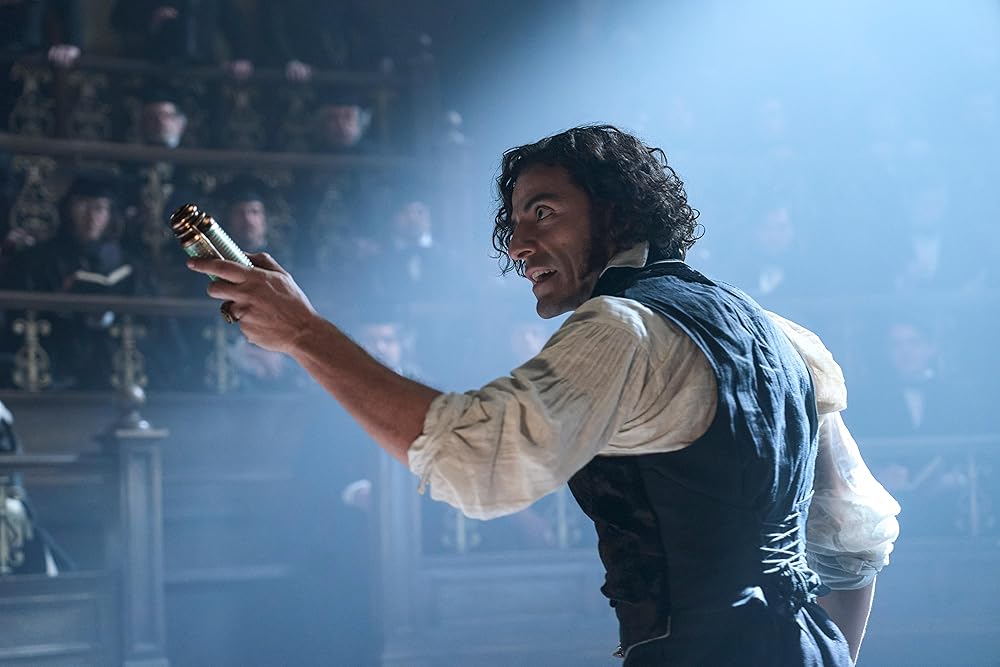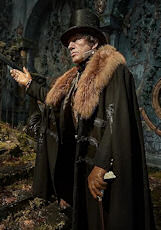Lavish. Everyone says so. The new Guillermo del Toro version of “Frankenstein” is so lavishly mounted that many scenes impress as if they were paintings by a grand master. I’ve seen them, and agree.
The problem is that the lavish set pieces overshadow the story. Now, this story has been filmed with one interpretation or another some 400 times, beginning with a 16 minute, one reel production in 1910 directed by J. Searle Dawley – remember him? With so many versions, it becomes difficult to stake out something fresh or at least individualistic enough to enhance one’s ouvre.
And most would agree that del Toro has been very successful in establishing himself as very individualistic. “Pan’s Labyrinth” and “The Shape of Water” are prime examples. He has not done as well with other properties that have been presented before: “Nightmare Alley” comes to mind. And now we have “Frankenstein.”
If we strip away the $100 million worth of elaborate sets, we come down to a handful of characters. Baron Leopold Frankenstein (Charles Dance), a nobleman and celebrated physician. He is an arrogant snob and a sadist, who treats his family with disdain, excepting his younger son, William. Victor Frankenstein (Oscar Isaac), the elder son who takes after his mother but also, unknowingly, after his father. Her death inspires his desire to conquer death. Elizabeth (Mia Goth) is engaged to Victor’s younger brother William and is well aware of Victor’s failings. She detests him, while he is enamored of her.
Harlander (Christoph Waltz) is a wealthy war profiteer who believes in Victor’s outrageous theories and is willing to finance his experiments. Captain Anderson (Lars Mikkelsen) is the monomanical captain of an explorer ship stuck in the Arctic ice while headed for the North Pole. In his way, he mirrors Victor’s obsession with discovery. The Creature (Jacob Elordi) is the patchwork (made from parts of dead soldiers) creation of Victor’s madness, all too soon abandoned as Victor was by his father.
Del Toro’s version, in some ways truer to Mary Shelly’s original 1818 version than some, begins and ends with Capt. Andersen’s ship stuck in the ice. His men rescue Victor Frankenstein from the elements and the dying man tells his tale. Del Toro has divided Victor’s story into two parts: Prelude (his upbringing) and Victor’s Story (his adulthood and creation of life). However, in the novel there is a third part, also told by Victor, but as it was told to him by his Creature. Instead, the Creature actually invades the ship and delivers his story firsthand.
It is this third part, in both the novel and film that gives us the humanity of the Creature, and the abject failure of Victor to care for his creation – just as his father failed to care for him. There is a deeper understanding of the relationships between the characters in this version than perhaps 99 percent of the others, but it is buried under the opulence – and brutality – of its setting.
Del Toro does make significant changes from the original, including eliminating the Creature’s murder spree after Victor refuses to create a mate for him, the complete restructure of Elizabeth character, and the addition of Harlander. Of course, almost all the adaptation took as great or greater liberties.

Runtime: Two hours, 29 minutes
Availability: In theaters and on Netflix
. . .
Join us on Facebook at
http://www.facebook.com/itsjustmovies!
